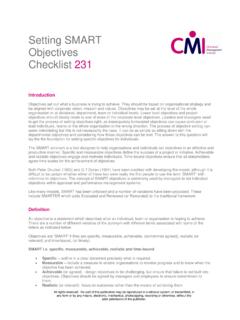Transcription of Increasing Empathy
1 2013. Increasing Empathy Manual: Empathy Training The Center for Building a Culture of Empathy and Compassion Founder & Director: Edwin Rutsch Content 1 Introduction .. 3. 2 Objectives .. 5. 3 Didactic model .. 6. 4 Evaluation .. 7. Module 1: Self Empathy .. 8. Module 2: Accepting others .. 14. Module 3 Accurate listening .. 19. Module 4: Perspective Taking .. 26. References .. 31. 33. Enclosure 1: Questionnaire .. 34. Enclosure 2: Explanation FFMQ and the perspective taking scale .. 36. Enclosure 3: Hand-out 1: Tips for the Body-scan.
2 37. Enclosure 4: A story to tell .. 38. Enclosure 5: Stories from the news to tell .. 39. Enclosure 6: Hand-out 2: Exercise to practice accurate listening .. 40. Enclosure 7: Reading Micro 41. Enclosure 8: Recognizing the Expressions The Answers .. 55. Enclosure 9: Hand-out 3: Accurate listening in real-life situations .. 57. Enclosure 10: What do you see? .. 58. Enclosure 11: Perception Cards .. 59. Enclosure 12: Survey .. 60. Manual Empathy Training - 2013 2. 1 Introduction This training is developed for The center for Building a Culture of Empathy and Compassion (CBCEC).
3 The reason for developing this training is the motivation of Edwin Rutsch to build a culture of Empathy and compassion. Edwin Rutsch is the founder and director of CBCEC and thinks fostering Empathy is important because it helps to resolve conflicts and improve the connection between each other. Furthermore it leads to a broader awareness and more openness to new insights. This is confirmed by the literature because research has shown that being empathic with each other and listen to each other leads to conflict resolution and a bigger connection between individuals (Davis & Oathout,1987; Long, Angera, Carter, Nakamoto, & Kalso, 1999).
4 Moreover Empathy leads to a broader awareness (Rogers, 1982). Lastly literature confirms that fostering Empathy is important because it reduces bullying, prejudice and racism and increases the will of individuals to help others in need (Dixon, 2011; Gordon, 2012;. Davis, 1980; Eisenberg & Miller, 1987). In Short, Empathy is a building block for a better society. The main goal of this training is that the participants1 can apply the learning materials from this training in real life situations to be able to be empathic with themselves as with others.
5 The target group of this training concerns 18+ adults with different ethnical backgrounds. This Empathy training is based on the insights of Carl Rogers. This because Edwin Rutsch is interested in the insight from Rogers. Rogers (1995)defines Empathy as follows: An empathic way of being with another person has several facets. It means entering the private perceptual world of the other and becoming truly at home in it. It involves being sensitive, moment by moment, to the changing felt meaning which flow in this other person, to the fear or tenderness or rage or confusion or whatever the other person is experiencing.
6 It means to temporarily living in the others perceptual world and moving in it delicately without making judgments; it means sensing meanings of which the other is scarcely aware, but not trying to uncover totally unconscious feelings because this can be to threatening. It includes communicating your sensing's of the person's world as you look with fresh and un frightened eyes at elements of which he or she is fearful. It means frequently checking with the other person as to the accuracy of your sensing's, and being guided by the responses that you receive.
7 You are a confident companion to the person in his inner world. By pointing to the possible meanings in the flow of the other person's experiencing, you can help him to focus on this useful type of referent. This way the other person can experience the personal meanings more fully and move forward in the experiencing. ( ). According to Rogers, in order to empathize with others, it is important to show unconditional positive regard, listen accurately and be able to take the perspective of others (1982). Unconditional positive regard means to not judge others but to accept them for who they are, both positive and negative sides and to acknowledge that they all are self-determining individuals.
8 Showing unconditional positive regard towards others is important because it gives them the knowledge that they are just as important as everybody else and they are more likely to think if he isn't judging me and allows me for who I am, I am maybe not that strange person I always thought I was . People who receive unconditional positive regard are more likely to show it towards themselves and start to empathize more with themselves (Rogers, 1982). 1. In this manual the participants are described with he or him. Of course the participants are men as well as women but to make this manual more readable, constructions like he/she or he or she are being avoid (with the exception of the definition of Empathy from Rogers because this is a quote).
9 Manual Empathy Training - 2013 3. Accurate listening means listening sincerely interested at the speaker and being able to reflect feelings and thoughts of the speaker accurately. This is an important aspect because by listening accurately you can communicate your sensing's of the other person's world correctly and help him to understand his own feelings, thoughts and personal meanings and becoming congruent with himself. Eventually this can lead to a broader awareness and more openness to new insights. Furthermore by listening accurately to others you can create deeper connections with them (Rogers, 1982).
10 Perspective taking means to enter the perceptual world of the other and experiencing the feelings personal meanings and thoughts of the other person. This is important because it increases the ability to really understand the other person (Rogers, 1982). Literature confirmed that the ability to empathize with others can be increased by at first learning how to be self empathic , observing without interpretations and by acknowledging others as self determining individuals. Furthermore by practicing in accurate listening and recognizing expressions.







